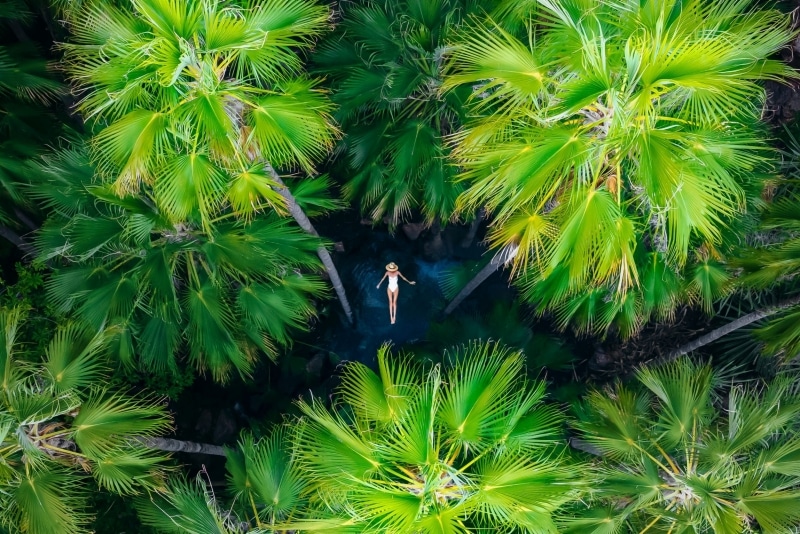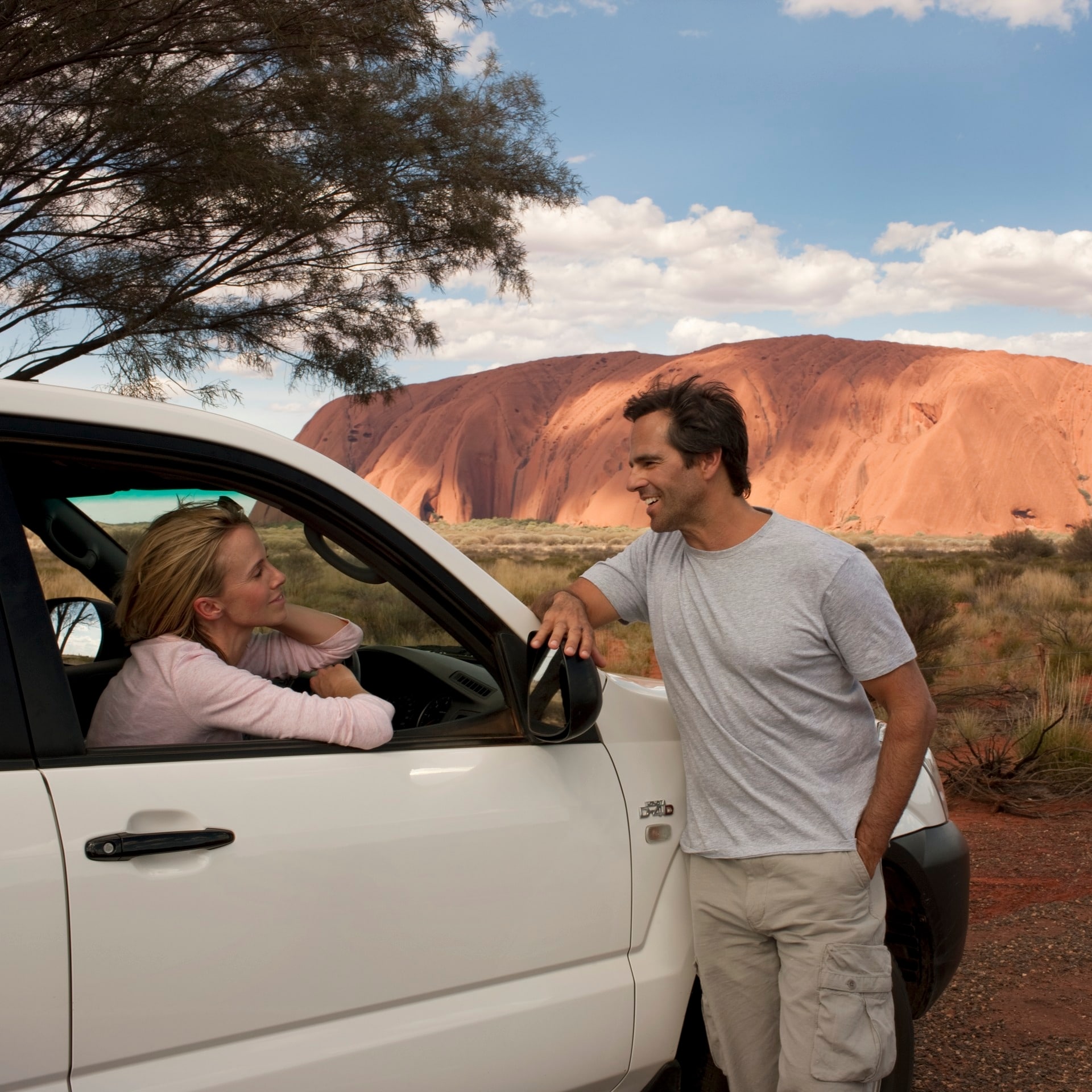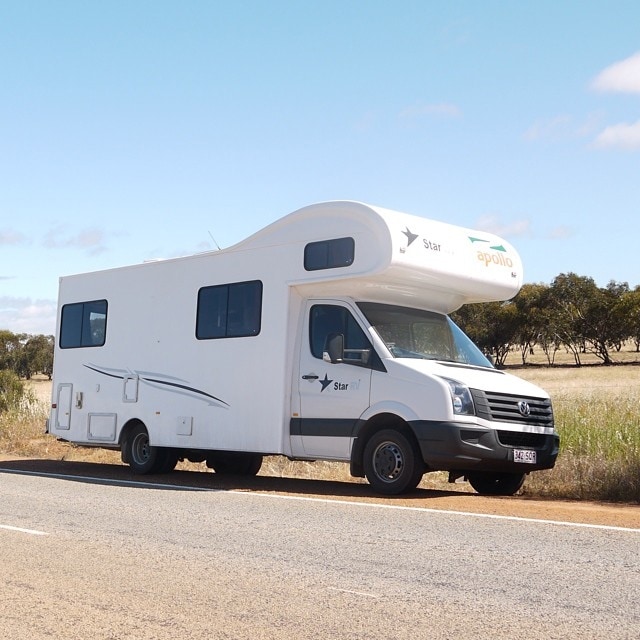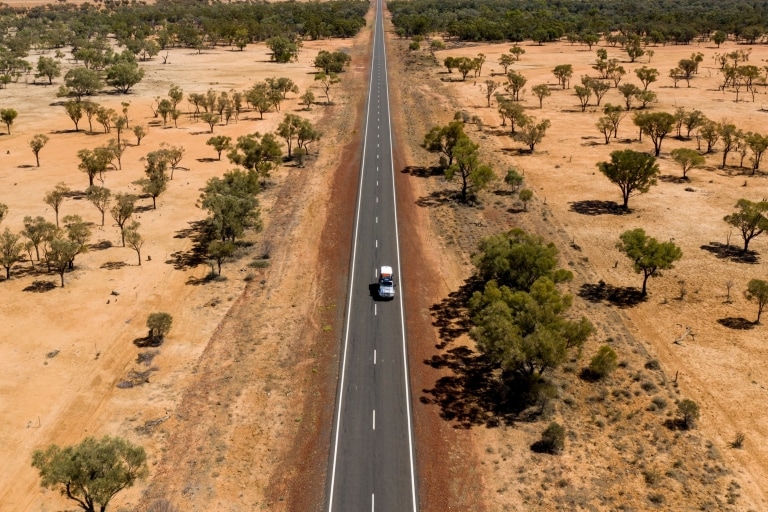
How to plan an Australian outback road trip
Take a drive on the wild side. Here's our top tips for the ultimate Australian outback adventure on four wheels.
By Lee Atkinson
There’s nowhere quite like the Australian outback (the mainland interior) with its big skies, starry nights and sense of limitless space. It’s where to go to see ancient mountain ranges and wildflower-filled plains, rocky gorges decorated with Aboriginal art and waterways lined with majestic river gum trees. It's a place of friendly country towns and colourful locals who wear hats as big as their smiles. And the best way to see it all is on a road trip.
What’s it like to drive in the outback?
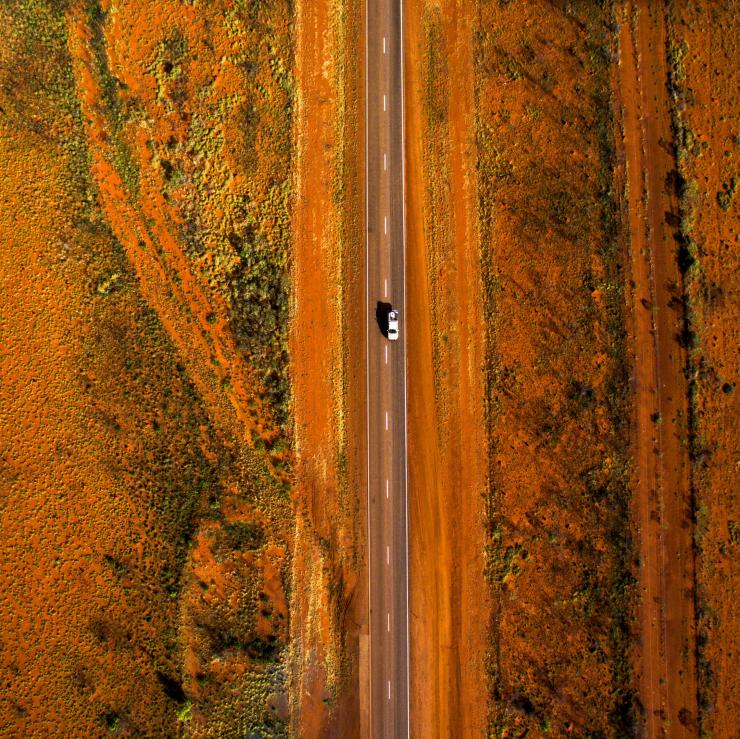
Stuart Highway, Alice Springs Region, Northern Territory © Tourism NT, Sam Earp
Driving in the outback is pretty stress-free. There’s a lot less traffic to worry about than in the cities and it’s well signposted. Country towns welcome visitors – they all have caravan parks where you can stay if you’re camping or campervanning and there’s lots of motels, pubs and roadhouses that serve meals and offer basic but comfortable accommodation.
It’s best to avoid driving at night, as animals such as kangaroos can be very hard to see and you don’t want to risk hitting one. You also need to be careful with road trains (trucks with three or four trailers). Some outback highways are quite narrow, so if you see a road train approaching, move over and give them plenty of space. And always make sure you have plenty of open road ahead if you are overtaking one.
Unsealed dirt or gravel roads are dusty and sometimes corrugated, and fine to drive on in dry weather. But don’t be tempted if it has rained recently – you’ll get bogged and driving on a road that has been marked as closed incurs big fines. You’ll also find that many unsealed roads traverse private property. Always leave a gate as you found it – if it’s open go straight on through, but if it’s closed make sure you close it after you’ve driven through.
What type of car do I need in the outback?

Keep River National Park, Northern Territory © Tourism NT, Shaana McNaught
You don’t need a 4WD to explore the outback; there’s lots of amazing outback road trips you can do in a regular car or campervan. The road from Alice Springs to Uluru, for example, is fully sealed, as is the highway across the Nullarbor in southern Australia, and the road that spears right through the heart of the country, from Adelaide to Darwin. Even the major roads in Kakadu National Park are fine for 2WDs.
But you will need a 4WD if you want to tackle some of the famous outback dirt tracks, like the Gibb River Road in Western Australia’s Kimberley region.
Is it easy to buy fuel in the outback?

The Corner Country Store, Tibooburra, New South Wales © Destination NSW
You’ll find petrol stations or roadhouses in almost every town and at regular intervals on major highways, but they often only operate from 9am-5pm and, in really out-of-the-way places, may be closed on weekends.
If you are planning on heading out on some of the remote tracks, be aware that sometimes diesel is more readily available than petrol in the outback, and many Aboriginal communities will sell Opal fuel instead of petrol, but this is fine to use in any vehicle that normally runs on unleaded. To be on the safe side, it’s a good idea to travel with an extra container of fuel.
What do I need to take into the outback?

The Pinnacles, Coral Coast, Western Australia © Tourism Australia
One of the most important things to bring on an outback road trip is plenty of drinking water. Tap water is safe to drink unless otherwise signposted (it can sometimes taste a little salty) but some outback petrol stations in areas where water is scarce won’t let you top up your campervan water tanks for free, so prepare to pay for it. You should also carry a good first aid kit, and make sure you have the tools needed to change a tyre.
Mobile phone coverage is patchy in the outback, so don’t rely on live online maps (download them in advance to use offline). Buy a GPS with satellite navigation, or hire one from your car rental company. Hiring a satellite phone is a good idea if you are heading off the main road network.
